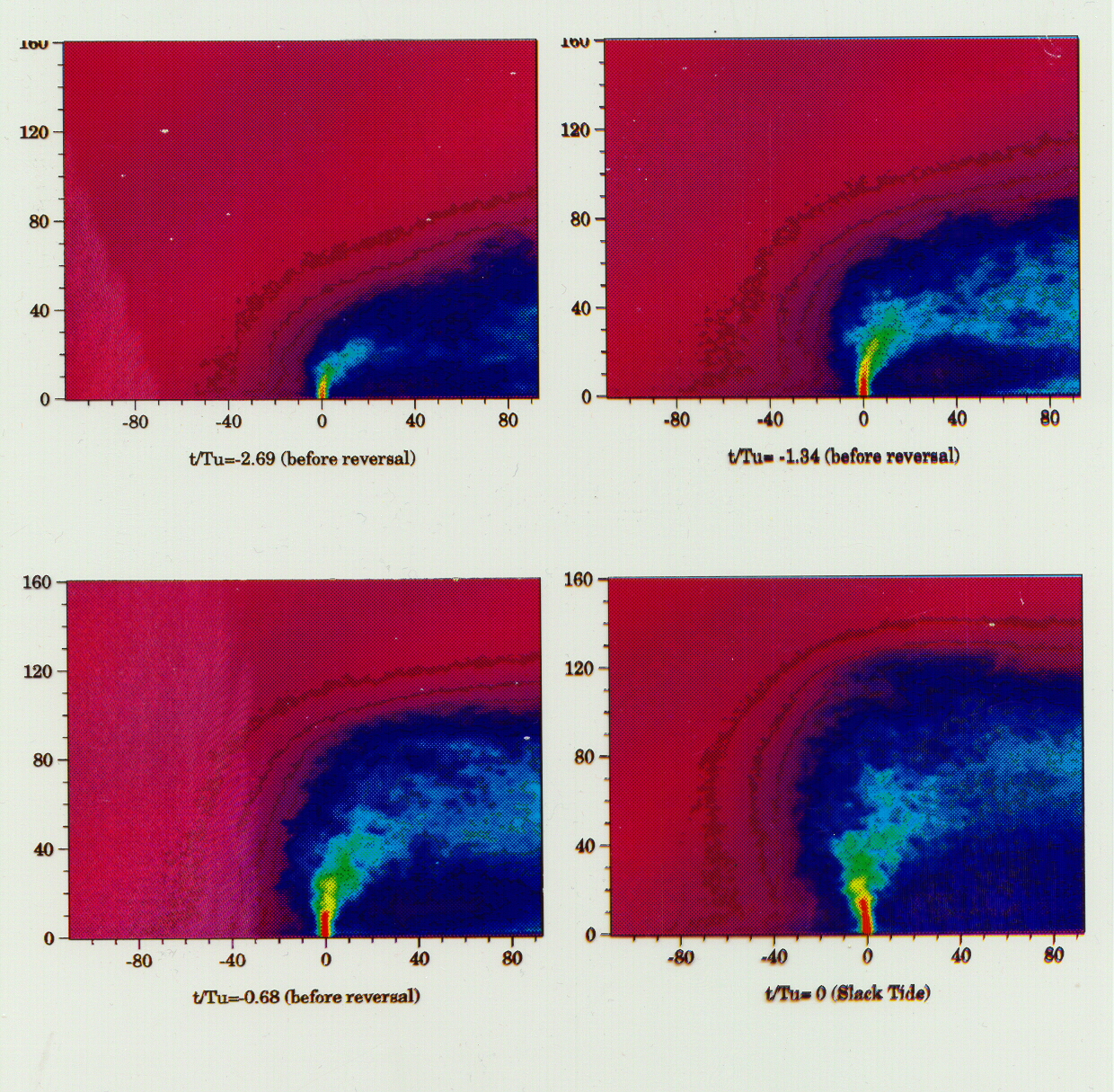Estuaries present complex ambient environments to challenge the mixing zone analyst.
The confluence of fresh and marine waters along with influence of atmospheric forcings (e.g. winds, waves) and unsteady
tidal currents can create complex local ambient velocity and density fields.
Estuaries are important production areas for fish and shellfish. Shellfish contamination from municipal
wastewater discharge (accidental or upset) is of particular concern.
Also, dredging operations are common practice in transportation infrastructure construction and maintenance.
Ambient current and density field data in oceans and estuaries can be complex. Detailed hydrographic data on bathymetric, velocity, salinity, and density profiles is recommended for regulatory mixing zone analysis.
One step towards specifying the ambient conditions in an estuary is to determine whether the receiving water body should be
considered "bounded" or "unbounded."
It is usually necessary to have access to cross-sectional diagrams of the water body. These should show the area normal to the ambient flow direction
at the discharge site and at locations further downstream. These cross-sections should then be schematized
into equivalent rectangular areas normal to the flow.



.jpg)